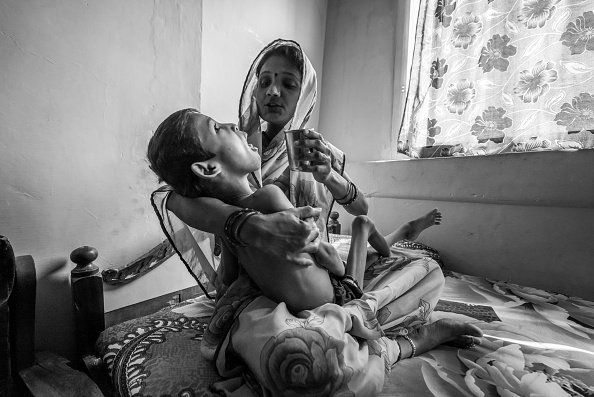Bhopal disaster 31st anniversary: Photos show children still born with deformities

"We were sleeping peacefully that night. I got up to find the children vomiting all over. First I wondered whether it was something they had for dinner. Then I too started vomiting. Soon all of us, my husband and me carrying the children were running," says Razia Bee of the midnight of 3 December, 1984 when the world's worst-ever industrial disaster happened in Bhopal, Madhya Pradesh, in India.
A catastrophic chemical leak at a Union Carbide pesticide plant in the central Indian city killed thousands of people within 72 hours that year. The disaster left more than 150,000 people severely disabled. About 27 tonnes of deadly methyl isocyanate (MIC) gas was released, exposing half a million people to the gas.
"My three-year-old daughter Nazma had swollen up so much like she would burst up," Bee adds. "We stayed with her at the hospital for 15 days and then the doctors said she would not survive. She died on the fifteenth day," Bee, who was 26 at the time of tragedy, said. She has since lost six members of her family to cancer following their exposure to the carcinogenic chemicals.
As India observed the 31st anniversary of Bhopal disaster, new photos have surfaced that show children in the region are still born with congenital deformities, something that depicts the severity of the disaster.
IBTimes UK presents some of the heart-wrenching photos of the children of the Bhopal gas leak with their mothers. These children, aged between 4 and 14, were born with deformities because their parents had been contaminated by carcinogenic water supply. The images show how the Bhopal gas leak is having long-term effects on the health of people through polluted soil, water and air even after three decades of the disaster.







© Copyright IBTimes 2025. All rights reserved.




















